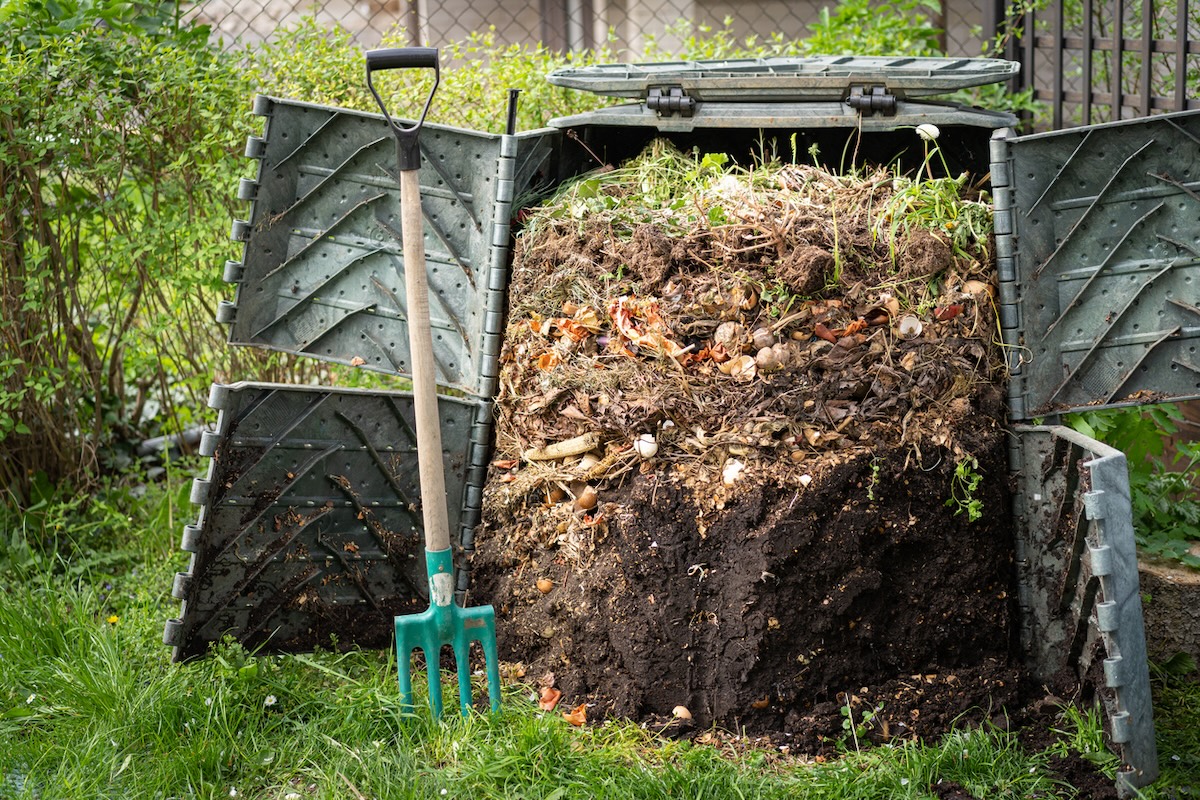We may earn revenue from the products available on this page and participate in affiliate programs. Learn More ›
Q: My neighbor recently told me that the secret to his lush lawn and thriving vegetable garden is humus. What is humus, what’s it made of, and where can I get it?
A: The definition of humus explains that it is the dark organic component of soil. It’s formed by the decomposition of plant and animal matter, including fallen leaves, twigs, insects, mushrooms, and other organisms. “Humus is essentially decayed organic matter present in the soil,” explains Rafi Friedman, president, Coastal Luxury Outdoors. He adds that it contains essential compounds and microbes that plants need to thrive.
Decomposition can be accomplished by worms, fungi, bacteria, or other microorganisms to produce soil humus naturally. It can also be created by composting.

Humus is a crucial component of healthy soil.
“Humus provides a favorable environment for plant roots to grow, aiding in the overall health and productivity of plants,” says Autumn Hilliard-Knapp, horticulturist and marketing coordinator at Perfect Plants. “It is often considered the most stable form of organic matter in the soil.”
Found in just the top 4 to 12 inches of the Earth’s surface, humus has a loose, crumbly texture that improves soil structure and reduces erosion by binding particles together. It helps air and water move through the dirt to reach plant roots. This is the definition of “well-drained soil.”
It also increases the water storage potential of soil. Moisture is held on the surface of humus particles and pores. When the soil dries, humus slowly releases the water it holds.
Humus contains important nutrients required for plant growth (in particular, nitrogen in a form easily used by plants) and promotes microbial activity. It even sequesters carbon, which can help reduce the effects of climate change.
The Earth creates humus naturally; DIYers can create it through composting.
Humus is the final product of decomposition. “It occurs naturally when living things of all kinds die and decay in a particular spot,” Friedman says. Microorganisms break down plant and animal residues into simpler chemical compounds, which leads to the formation of humus.
Compost is a human-made type of humus, created through organic waste management processes. Composting involves collecting organic materials like food scraps, yard waste, and manure and allowing them to decompose in a controlled environment.
Through the composting process, microorganisms break down the organic matter, producing nutrient-rich humus that can be added back to the soil to improve its fertility and structure. “By actively participating in composting and organic waste management, humans can mimic the natural process of humus formation, contributing to sustainable soil health and agricultural practices,” Hilliard-Knapp says.

Lawns and gardens can become depleted of humus.
Growing food crops, ornamental plants, and turf grasses depletes the humus in lawns and gardens. To maintain humus-rich soil, humus must be replenished, preferably on an annual basis. Even the best garden fertilizer isn’t sufficient because, although it provides specific nutrients, it does not improve soil structure or texture and does not support microorganism activity, which is essential for turning organic matter into plant nutrients.
One easy way to add humus to your property is to leave grass clippings and leaf litter in place, where they will eventually decay and contribute to humus formation. Another way is to top-dress your lawn, which involves laying down a thin layer of compost on top of the grass.
In addition, reducing tillage and utilizing cover crops can help preserve and replenish humus in garden beds.
Final Thoughts
Humus is critical to life on this planet. Because less than a foot of humus-containing soil is accessible in the Earth’s crust and since it is depleted by growing plants, it’s vital to replenish it in order to sustain plant growth and, in turn, every living being that depends on plants.
What is humus soil? It’s the thick black or brown substance created by decomposition of plant and animal matter that contains the basic chemical elements and important nutrients needed for healthy plants. Humus can be created naturally by the decomposition of plant and animal matter or through composting organic waste.


